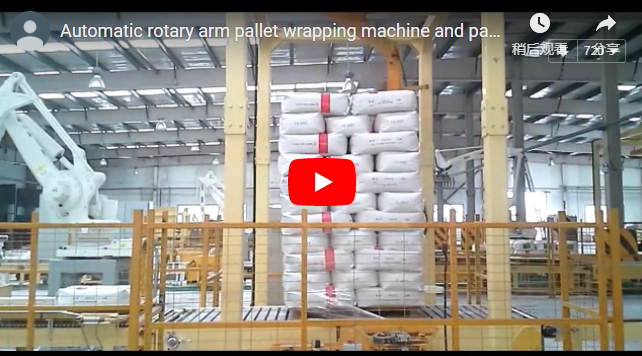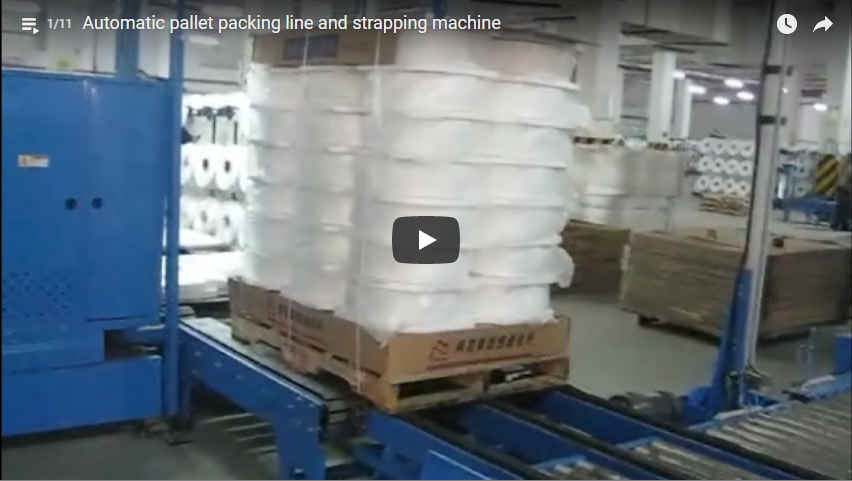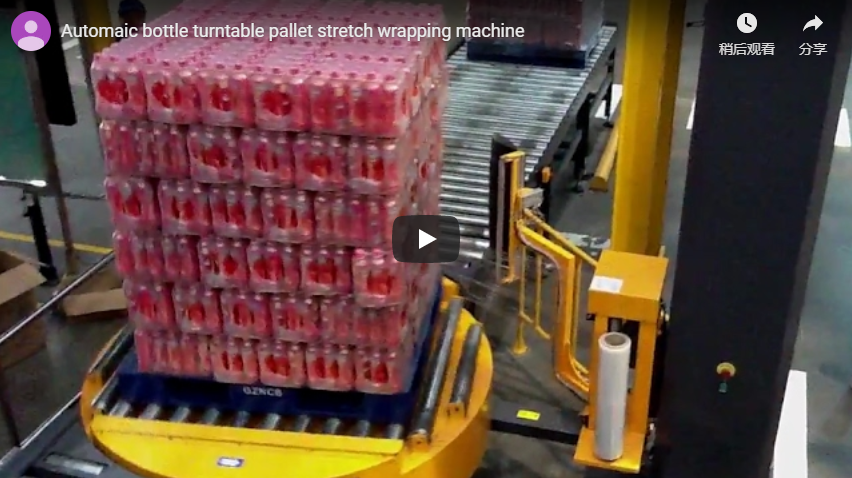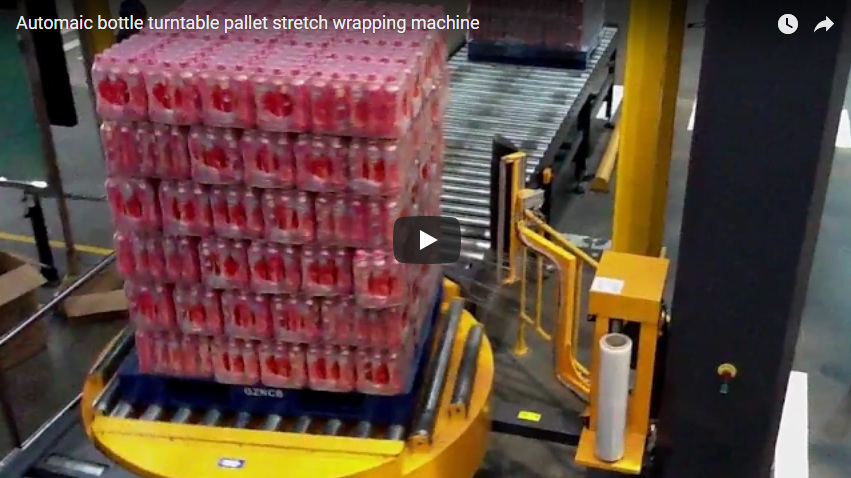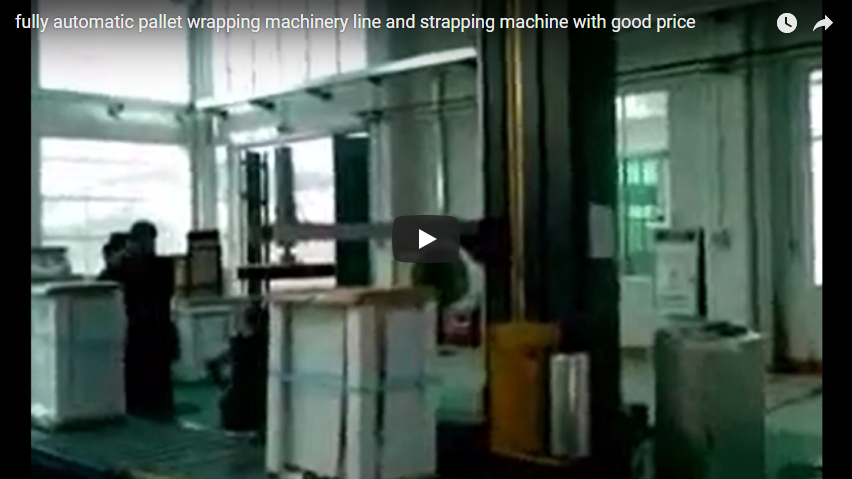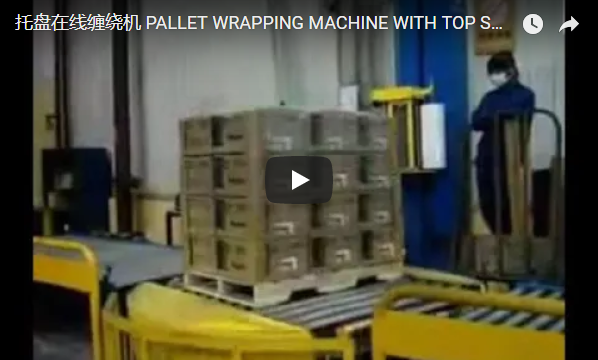Mastering Load Containment: A Fabricator's Deep Dive into Automatic Pallet Stretch Wrappers
In the demanding world of fabrication and manufacturing, efficient and secure shipment of goods is paramount. Manually wrapping pallets is often time-consuming, inconsistent, and can lead to unnecessary film waste or, worse, damaged loads during transit. Stepping up to an automatic pallet stretch wrapping machine isn't just an upgrade; it's a strategic investment in operational efficiency, load security, and bottom-line savings. This article delves into the technical aspects, practical benefits, and real-world considerations of incorporating automated stretch wrapping into your workflow, drawing on practical experience to guide your decision-making.
1. Why Automate Your Pallet Wrapping Process?
Transitioning from manual or semi-automatic methods to a fully automatic stretch wrapper offers tangible advantages:
- Consistency is Key: Automation ensures every pallet receives the same pre-determined wrap pattern and tension, vital for consistent load containment and stability.
- Increased Throughput: Significantly faster cycle times compared to manual wrapping boost end-of-line productivity, especially in high-volume operations.
- Optimized Film Usage: Powered pre-stretch systems (often achieving 200-300% stretch) maximize film yield, drastically reducing material costs per pallet compared to manual application.
- Enhanced Operator Safety: Automating the process eliminates the need for operators to walk backward around moving loads, reducing risks of trips, falls, and repetitive strain injuries.
- Improved Load Security: Precise tension control and consistent application minimize the risk of product shifting or damage during handling and transportation.
2. Core Technology: How Automatic Stretch Wrappers Operate
At its heart, an automatic stretch wrapper performs a sequence of operations with minimal human intervention:
- Load Placement: Pallets are typically delivered to the wrap zone via conveyor. Sensors detect the pallet's presence and dimensions.
- Film Attachment: The machine automatically attaches the leading edge of the stretch film to the pallet load.
- Wrapping Cycle: Based on pre-programmed parameters (top/bottom wraps, overlap, tension), the machine wraps the load. This involves either rotating the load on a turntable or having a wrap arm orbit a stationary load.
- Film Severance & Sealing: Once the cycle is complete, an automatic film cut and wipe system severs the film tail and typically wipes or heat-seals it against the load, preventing loose tails.
- Discharge: The wrapped pallet is automatically conveyed out of the wrap zone.
3. Key Types of Automatic Stretch Wrappers
Choosing the right type depends heavily on your specific application:
3.1. Turntable Automatic Stretch Wrappers
- Operation: The pallet load is placed on a rotating platform. The film delivery system moves vertically as the load spins.
- Best Suited For: Stable, relatively uniform loads that can handle rotational forces. Common in food and beverage, consumer goods.
- Considerations: Load weight limits apply to the turntable; very light or unstable loads might shift during rotation.
3.2. Rotary Arm Automatic Stretch Wrappers
- Operation: The pallet load remains stationary on a conveyor or the floor. A rotating arm carrying the film delivery system orbits the load.
- Best Suited For: Very heavy, tall, light, or unstable loads that shouldn't be rotated. Ideal for industries like building materials, fabricated metal products, or distribution centers with diverse load types.
- Observation: The machine shown in the video below is a prime example of a rotary arm stretch wrapper in action, demonstrating how it effectively secures loads without rotating the pallet itself.
4. Essential Features and Technical Specifications to Consider
Beyond the basic type, several features significantly impact performance and ROI:
- Powered Film Pre-Stretch Carriage:
- Mechanism: Uses rollers rotating at different speeds to stretch the film before it's applied to the load.
- Parameter: Pre-stretch Ratio (e.g., 150%, 200%, 250%, 300%). Higher ratios mean greater film efficiency.
- Benefit: Maximizes film yield, enhances load holding force with less material. A must-have for cost savings.
- Automatic Film Cut & Clamp/Wipe System:
- Mechanism: Typically uses a hot wire or blade to cut the film and a brush or heat sealer to secure the tail.
- Benefit: True automation – eliminates manual film cutting, improving speed and safety. Essential for high throughput.
- Load Height Sensing:
- Mechanism: Photo-eye or ultrasonic sensor detects the top of the load.
- Benefit: Automatically adjusts wrap height for varying pallet loads, ensuring complete coverage without wasted film or manual adjustment.
- Integrated Weigh Scale System:
- Functionality: Combines wrapping with weighing, often integrating the scale into the turntable or conveyor section.
- Benefit: As noted previously, this dual capability streamlines processes, eliminates double handling for weighing, provides accurate shipping weights, reduces costs, and improves distribution data accuracy. Ideal for LTL shipments or internal tracking. This turns the machine into a pallet wrapping machine with scales.
- Top Sheet Dispenser:
- Functionality: Automatically applies a sheet of film or poly material to the top of the load before or during the wrap cycle.
- Benefit: Provides protection against dust, moisture, and tampering for loads stored outdoors or requiring extra protection.
- Control System & Programming:
- Features: PLC-based controls, touchscreen HMI, multiple wrap program storage.
- Benefit: Allows easy setup, adjustment of parameters (tension, speed, wrap counts), diagnostics, and saving specific recipes for different load types.
5. From the Shop Floor: Real-World Implementation Insights
Having worked with and observed these machines in various fabrication environments, here are some practical takeaways:
- Integration Matters: Consider how the wrapper fits into your existing line. Infeed and outfeed conveyor logic, safety interlocks (light curtains, fencing), and communication with upstream/downstream equipment are crucial.
- Maintenance is Non-Negotiable: Regular checks on rollers, belts, the cut/wipe mechanism, and sensors prevent costly downtime. Keep spare parts like cutting blades and film rollers on hand. From our experience, neglecting routine lubrication and cleaning is the fastest way to performance issues.
- Film Selection is Critical: Not all stretch film is created equal. The gauge (thickness), pre-stretch capability, and puncture resistance must match your machine's capabilities and your load requirements. Using the wrong film negates the benefits of a high-performance pre-stretch system.
- Operator Training: While automatic, operators still need training on selecting programs, clearing faults, safely loading film, and basic troubleshooting. Don't underestimate the importance of a well-trained operator for maximizing uptime.
6. Selecting the Right Automatic Wrapper for Your Fabrication Needs
Choosing the optimal machine involves assessing several factors:
- Throughput Requirements: How many pallets per hour/shift do you need to wrap? This dictates the required cycle speed.
- Load Characteristics: What are the typical dimensions (L x W x H), weight, and stability of your pallets? This heavily influences Turntable vs. Rotary Arm selection.
- Operating Environment: Are there space constraints? Is the environment dusty, cold, or wet?
- Required Features: Do you need integrated scales, top sheet application, or specific wrap patterns?
- Budget: Consider not just the initial purchase price but also installation, training, maintenance, and long-term operating costs (film, power).
- Level of Automation: Do you need a standalone machine or full integration into an automated packaging line?
Conclusion: Wrapping Up Your Decision
An automatic pallet stretch wrapping machine is a powerful tool for any fabricator looking to enhance packaging quality, boost productivity, and reduce operational costs. By understanding the different types, key technological features like film pre-stretch and automatic film cutters, and considering practical implementation factors, you can select a system that delivers consistent, secure loads efficiently. Moving beyond manual methods provides a significant competitive advantage through improved load integrity and optimized resource utilization.
For further information specific to available models and configurations:
info@fhopepack.com
Explore various stretch wrapping solutions here:
https://www.fhopepack.com/Stretch_wrapping_machine.html

